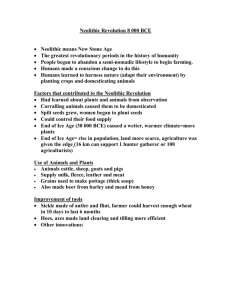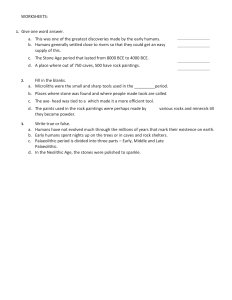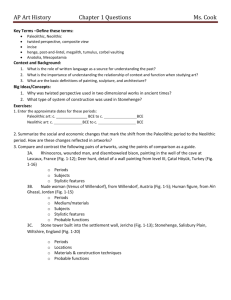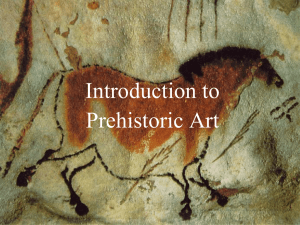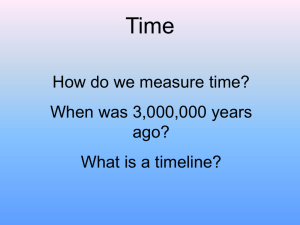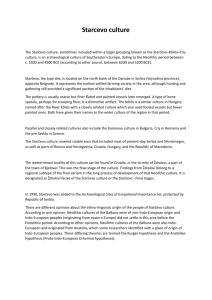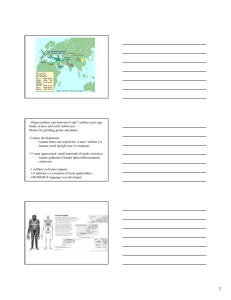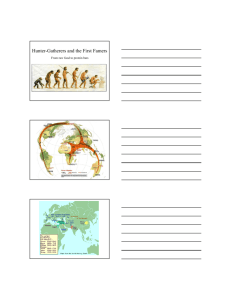Prehistoric Art: Stone Age Lecture Notes
advertisement
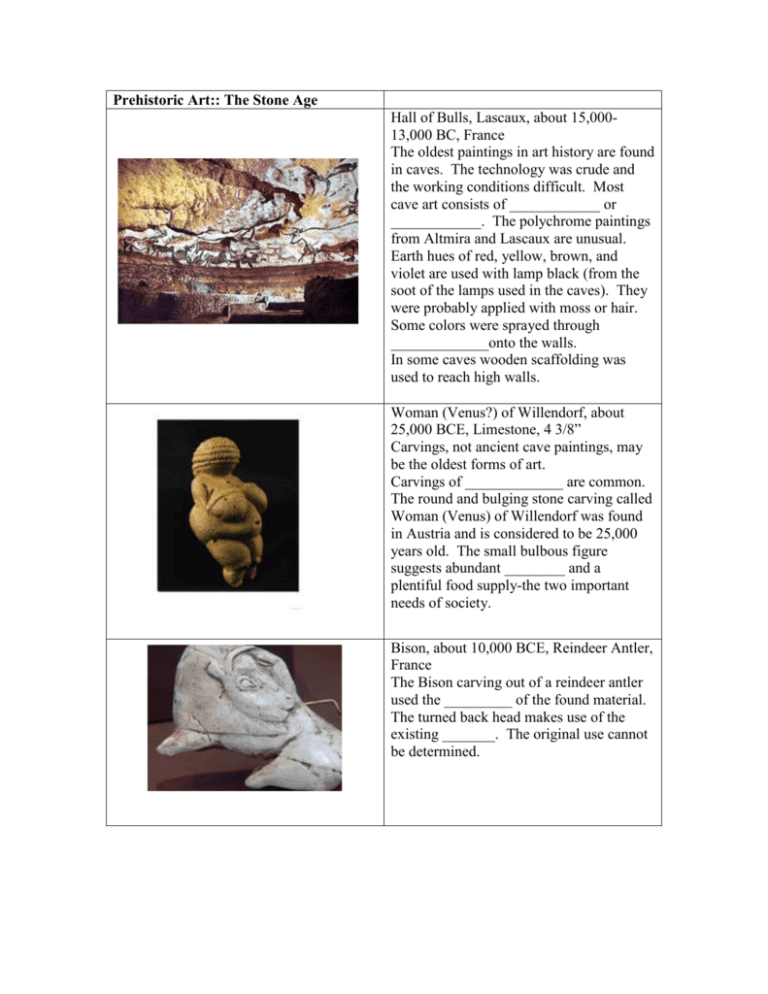
Prehistoric Art:: The Stone Age Hall of Bulls, Lascaux, about 15,00013,000 BC, France The oldest paintings in art history are found in caves. The technology was crude and the working conditions difficult. Most cave art consists of ____________ or ____________. The polychrome paintings from Altmira and Lascaux are unusual. Earth hues of red, yellow, brown, and violet are used with lamp black (from the soot of the lamps used in the caves). They were probably applied with moss or hair. Some colors were sprayed through _____________onto the walls. In some caves wooden scaffolding was used to reach high walls. Woman (Venus?) of Willendorf, about 25,000 BCE, Limestone, 4 3/8” Carvings, not ancient cave paintings, may be the oldest forms of art. Carvings of _____________ are common. The round and bulging stone carving called Woman (Venus) of Willendorf was found in Austria and is considered to be 25,000 years old. The small bulbous figure suggests abundant ________ and a plentiful food supply-the two important needs of society. Bison, about 10,000 BCE, Reindeer Antler, France The Bison carving out of a reindeer antler used the _________ of the found material. The turned back head makes use of the existing _______. The original use cannot be determined. Neolithic plastered skull, about 7000 BCE, Life-size, from the site of Jericho The Neolithic Era (8000-3000 BC). Humans moved from caves and began to form communities. They herded cattle and raised simple crops. Among the ruins of one of these communities, Jericho, archeologists found a group of sculpted heads. The heads are actual human skulls with ________ applied to the heads. The purpose is not known. Neolithic plastered skull, about 7000 BCE, Life-size, from the site of Jericho Several huge stone monuments have survived from the Neolithic era. Stonehenge is England was constructed in 2000 BCE. Stonehenge is a ______ or cromlech of gigantic stones, some weighing 50 tons. The lintels or ____________ were curved slightly to fit the circular plan. Apparently a ritual site, Stonehenge was constructed to indicate the solstices and equinoxes of the calendar year, and probably the time for planting, harvest and religious ceremonies.
